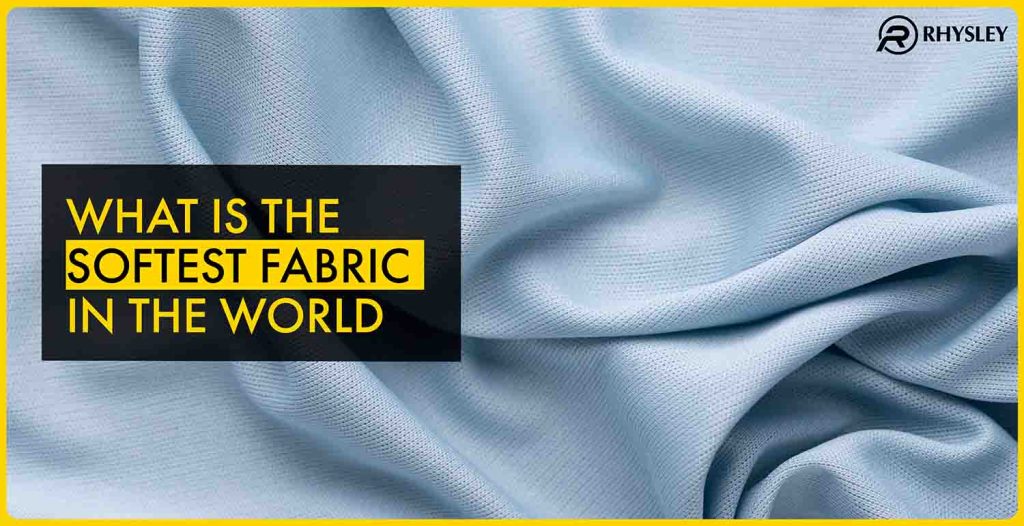
What is the Softest Fabric in the World
Wearing or sleeping on soft fabric is the most comfortable thing ever. Yet, have you ever wondered what is most softest fabric material? We all love soft materials for our clothes, bed sheets, and blankets, but with so many fabrics, it can be hard to figure out which is the softest. Today, we’ll explore some of the world’s softest fabrics to help you find your perfect match.
What Makes a Fabric Soft?
The softness of a fabric depends on various key factors. First, the type of fiber used in the fabric plays a big role. Natural fibers like our silk or cotton tend to be softer than synthetic ones which are man-made fibres, mostly prepared from raw material petroleum called petrochemicals.
So, how the fabric is woven or knitted matters—tighter weaves can often make fabrics feel smoother. In the context of garment manufacturing, the choice of fabric and its softness is crucial for the overall quality of the final product. Last but not least, the finishing process (the way a fabric is treated before it’s sold) can enhance softness.
And so, when we talk about soft fabric, we’re really talking about a combination of the quality of the fibers, how they are made, and the finishing touches.
Top Soft Fabric Materials: Which One is the Softest?
Let’s look at some of the softest fabrics in the world and what makes them so special.
Silk
Silk is one of the oldest fabrics known to humankind, prized for its luxurious feel and shine. Made from the cocoons of silkworms, silk is incredibly smooth and has a natural softness that feels cool against the skin.
Silk’s light weight and smooth texture make it a top contender when it comes to soft fabric materials, especially for clothing like scarves, dresses, and sleepwear.
Cashmere
The cashmere goat, native to mountainous regions of Asia such as Mongolia and the Himalayas, is the source of cashmere. What makes cashmere so soft is the ultra-fine fibers used to create it.
These fibers are much finer than regular wool, which is why cashmere feels so much smoother and softer. Sweaters and scarves made of it are popular because of how warm they are without being heavy.
Bamboo Fabric
Although it may come as a surprise to some, bamboo fabric is quickly gaining popularity for its eco-friendliness and plush feel. Bamboo fibers are incredibly soft like cashmere.
Additionally, bamboo fabric lets air flow and removes moisture, which makes it perfect for clothing and bedding. Bamboo fabric is a great sustainable solution for those who seeks both comfort and conservation of the environment.
Pima Cotton
Pima cotton is a high-quality cotton known for being softer than regular cotton. The secret lies in the length of its fibers—Pima cotton has longer fibers that make the fabric feel smoother and more durable.
It’s commonly used in T-shirts, bed sheets, and towels, offering a soft, luxurious feel that lasts longer than typical cotton.
Comparing Soft Fabrics: Which is the Softest
When comparing these fabrics, it’s clear that each has its unique qualities. Silk has a smooth, almost slippery feel that’s perfect for a cool, lightweight touch. Cashmere, on the other hand, is all about warmth and softness, ideal for chilly weather. Bamboo fabric stands out for being both soft and eco-friendly, while Pima cotton offers everyday comfort with its long-lasting softness.
Many people swear by cashmere for the ultimate in softness, while others prefer the silky smooth feel of bamboo. This discussion is also relevant in the context of denim manufacturing, where the choice of fabric can greatly affect the comfort and feel of the final product. Scientific studies have shown that natural fibers, like those found in cashmere and silk, tend to be softer to the touch than synthetic ones, which is why they’re so highly prized.
Conclusion
I know after exploring some of the world’s softest fabrics, it’s hard to pick just one winner. Whether you prefer the luxurious feel of silk, the cozy warmth of cashmere, the eco-friendly softness of bamboo fabric, or the durable comfort of Pima cotton, each fabric has its own charm.
Personally, I’m drawn to the sustainable softness of bamboo, but the choice ultimately depends on your needs and preferences.
Why not try a few for yourself? Just pick a fabric that matches your style, and you might discover your own favorite soft fabric material. Let us know what you think—what is the softest fabric in your world?